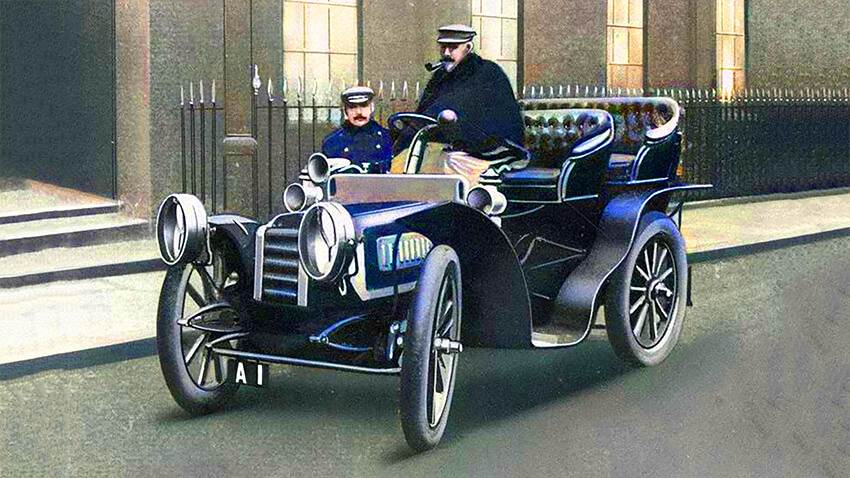
Private number plates have become a popular feature on UK roads, with drivers willing to pay significant sums of money for personalised registrations that reflect their names, interests or businesses. Some of these registrations have a long fascinating history, with their origins dating back over a century.
Why do we have number plates?
When motor cars first became popular, the number of vehicles on the road grew rapidly and it soon became clear that regulation was needed. The number plate provided a simple yet powerful way for the DVLA to identify and trace cars. Since their introduction, number plates have become an integral part of motoring life.
When were number plates introduced?
The Motor Car Act of 1903 was the first legislation of its type and it introduced number plates to British cars. The Act focused on driving licences, setting formal speed limits and vehicle registration. The last was an idea borrowed from the Netherlands, the first country to adopt national registration plates in 1898.
What was the first-ever number plate?
It is commonly, and mistakenly, believed that A 1 was the first British registration issued. It was certainly the first issued in London; Earl Russell and others queued up all night long outside London County Council’s offices to acquire the number.
Russell managed to secure it but, by that time in December 1903, other numbers had already been issued elsewhere. DY 1, for example, was issued on 23 November 1903 in Hastings. In fact, DY 1 is the earliest registration for which records still exist.
The 'B 1' plate, was snapped up by the famous British motoring enthusiast and racer, Sir John Scott-Montagu. Scott-Montagu was a pioneer of the private number plate, and he soon began using them on his own vehicles, including a Rolls-Royce Silver Ghost which was registered with the 'RR 1' plate.
These letters on number plates originally identified the local authority responsible for registering the vehicle.
What are dateless numbers?
Unlike the formats that followed, these early registrations had no year code and so are now known as ‘dateless’ numbers. They are very popular as they can be assigned to cars of any age, effectively concealing the true age of the car.
They are also increasingly rare as they were only generally issued until 1963. Unissued dateless numbers can sometimes still be released into DVLA auctions. However, other dateless plates are still being lost when old cars are scrapped and their owners neglect to save the registrations.
Celebrity number plates
During the 1920s and 1930s, personalised registration plates became increasingly popular, with the wealthy and famous seeking to display their individuality and status through their cars. One of the most famous examples was the GF 1 plate owned by the entertainer George Formby and this trend continued through to the post-war era with popular radio and TV stars like entertainer Max Bygraves with MB 1 and sporting personalities like racing driver Stirling Moss with 7 SM.
The affluent post-war era also enabled the new middle classes to lead a surge in the demand for personalised number plates The cherished number plate market soon became a lucrative industry, with drivers seeking out plates that had a special significance to them. Prices for these plates began to soar, with some of the most desirable selling for tens or even hundreds of thousands of pounds.
More recently, Regtransfers has been instrumental in supplying some exceptional examples for current household names such as Russell Kane (KAN 333E), Jay Kay of Jamiroquai (JAY 1K), Denise van Outen (OUT 3N), James Martin (6 HEF), Russell Watson (T3 NOR) and Frankie Dettori (60 FD) to name just a few.
Conclusion
Personalised number plates continue to be popular, with the market showing no signs of slowing down. Today, there are literally millions of combinations available to purchase. The choice ranges from the simple inclusion of initials to combinations of letters and numbers which suggest a complete name or word, due to the similarity between some digits and letters.
The history of private number plates in the UK is a fascinating tale of how a simple form of identification has evolved into a symbol of status and individuality. From the early days of the automobile to the present day, these plates have remained a coveted feature on UK roads, and they are likely to continue to be so for many years to come.
